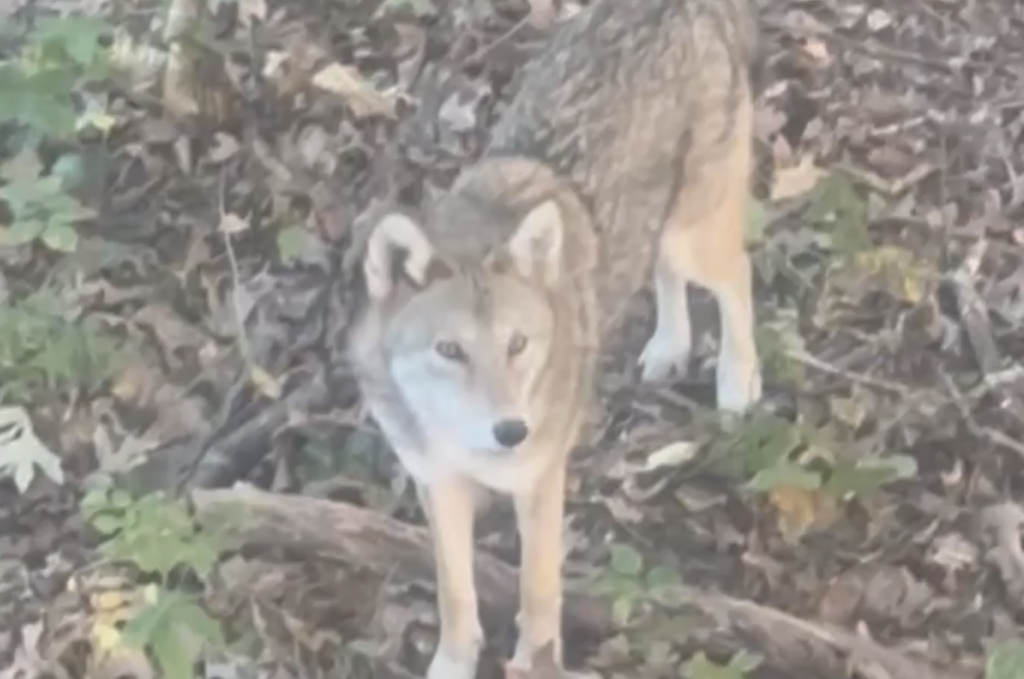
 press-releases
press-releases 

On October 19, a deer hunter sitting in a tree stand on a tract of farmland in Orient watched as what looked like someone’s dog approached his stand.
The hunter took his cell phone out and a shot a video – of a healthy male coyote.
“We knew it was there as we’d seen it on trail cameras,” said Anthony Babich, the social media director of Long Island-based Elite Long Island Outfitters, the firm that leases the Orient land and whose guide made the video.
“We’ve only seen the one,” he added. “But there may be more.”
The video is visual proof of what wildlife experts have talked quietly about for several years – that coyotes have made their way to the East End of Long Island, after establishing themselves farther west on the Island. They are now part – presumably in a small way – of the local ecosystem.
“There is no doubt that there are a few individuals around the Town of Southold,” said Craig Jobes, an environmental analyst for Southold Town, who has seen the Orient video as well as trail camera photos of different local coyotes, including one seen in Greenport.
“We have seen data to support that there could be as many as a half a dozen or so individuals here at this point,” Jobes said.
Times Review Media Group showed the video to the New York State Department of Conservation office in Stony Brook. In response, Wildlife Biologist Leslie Lupo wrote back and said, “In the summer of 2018, a coyote sighting in Roslyn/Searingtown area was confirmed through multiple recorded videos.
“Coyote sightings have also been confirmed in the Manhasset, Port Washington area,” she wrote in an email. “DEC is also aware of reported sightings in Laurel and Riverhead and one was reported in Middle Island on New Year’s Eve in 2016 but was never sighted again. Coyotes have also been found dead on beaches in Mattituck and Southold, but it could not be determined if they had washed up at these locations.”
As for whether the numbers will begin to grow, Ms. Lupo said many factors are in play. “The ultimate movement of coyotes onto Long Island will be affected by their ability to navigate busy transportation corridors. Abundant food resources exist on Long Island to support coyotes but the difficulty of navigating Long Island’s busy roadways might limit their spread onto Long Island,” she wrote.
Frank Vincenti, of the Nassau County-based Wild Dog Foundation, which is affiliated with the Long Island Coyote Study Group, said coyote expansion on Long Island has been seen for eight years.
He said, “It’s safe to say that some have firmly established themselves having been here and even breeding for more than five years,” he said. “There is still more potential expansion of coyotes and we are seeing this take place on the East End and South Shore.”
He said a coyote was seen in Bridgehampton several years ago. “There has been documented at least two individuals on the North Fork and they are traveling a very wide expanse so are rarely seen,” he said.
The origin of the East End coyotes is up for debate among experts. How they get here is a much-debated question. Mr. Babich said there are reports of people upstate taking newborn coyotes from their mothers, partly raising them, and them releasing them. A DEC official said the coyote in the Orient video might have come from Fishers Island. How it got there – by ferry, or swimming from Connecticut – is an open question.
Mr. Vincente said western Long Island coyotes almost certainly came in an exodus from a New York City-based population. From there, they likely moved east looking for more open space and reliable food supplies – perhaps all the way to Orient at the eastern tip of the North Fork.
While coyote hunting is legal in parts of upstate New York, it is illegal on Long Island. They are meat eaters with a usual diet of rabbits, possums and other small animals. Experts say they can kill small deer and large birds like turkeys and chickens.
Interviews with experts for this story urge caution if you see a coyote: Don’t ever feed them. Don’t allow your dog to chase or confront them. If a coyote is in the neighborhood, keep your dog in a fenced-in yard. Outdoor cats should be kept indoors. Free-range chickens should be cooped at night.
Ms. Lupo pointed out that coyotes are an integral part of upstate New York’s ecosystem. She said seeing a coyote is not cause for concern.
“Conflicts with coyotes can arise in residential areas when homeowners leave garbage or pet food outside,” she said in an email. “In some cases, people have intentionally fed coyotes, causing coyotes to associate people with food. Feeding coyotes may reduce their natural fear of humans and increase the potential for conflicts.
“In most cases, coyotes avoid people as much as possible,” she added. “Therefore, a coyote that does not flee from people should be considered dangerous. When coyotes exhibit bold behavior and act aggressively to people or pets, DEC urges the public to contact their local police department, Environmental Conservation Police Officer (ECO), or regional DEC office.”
Mr. Jobes encourage anyone who sees a coyote and gets a photograph to submit it to him at [email protected].
24World Media does not take any responsibility of the information you see on this page. The content this page contains is from independent third-party content provider. If you have any concerns regarding the content, please free to write us here: contact@24worldmedia.com